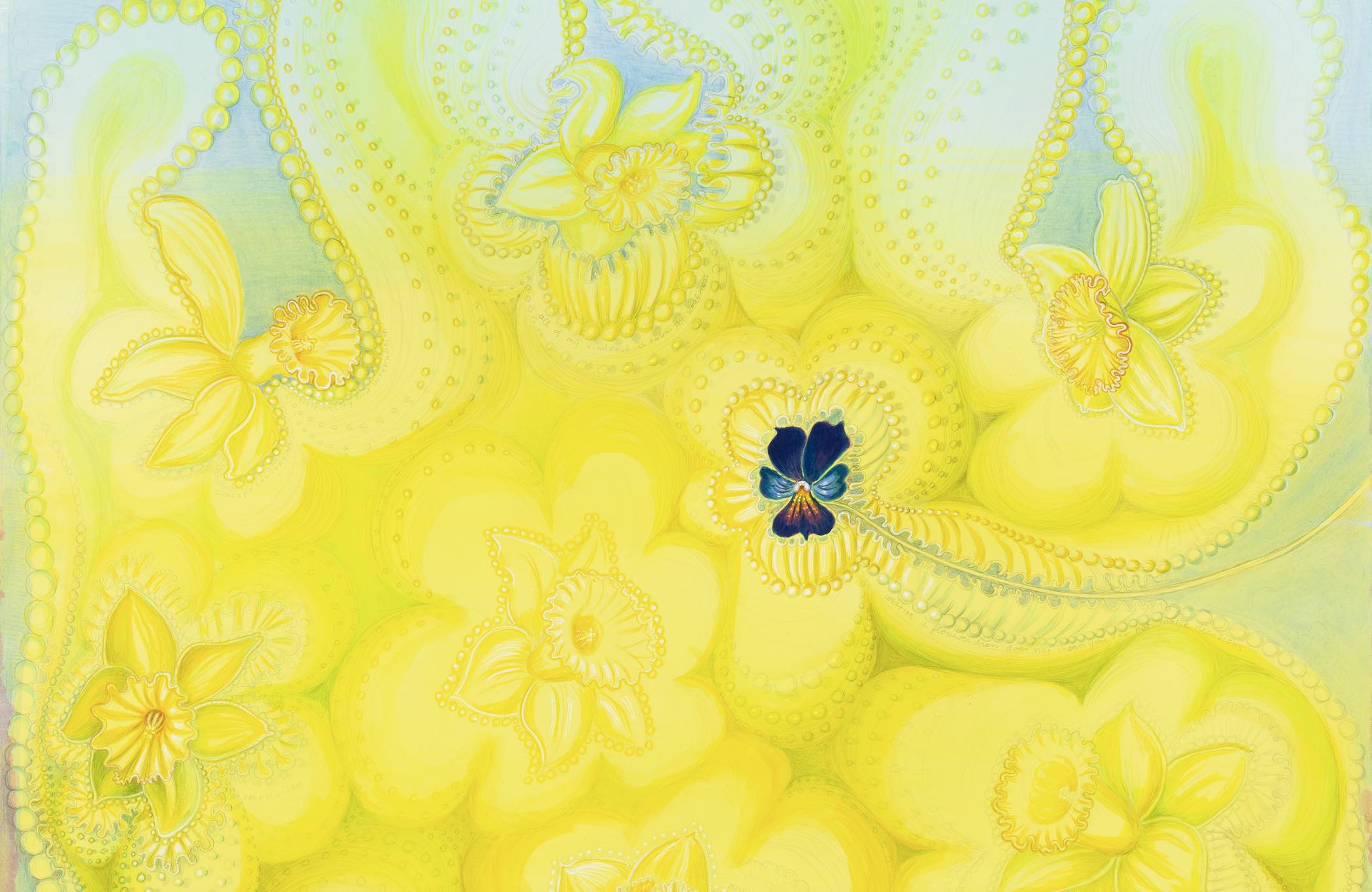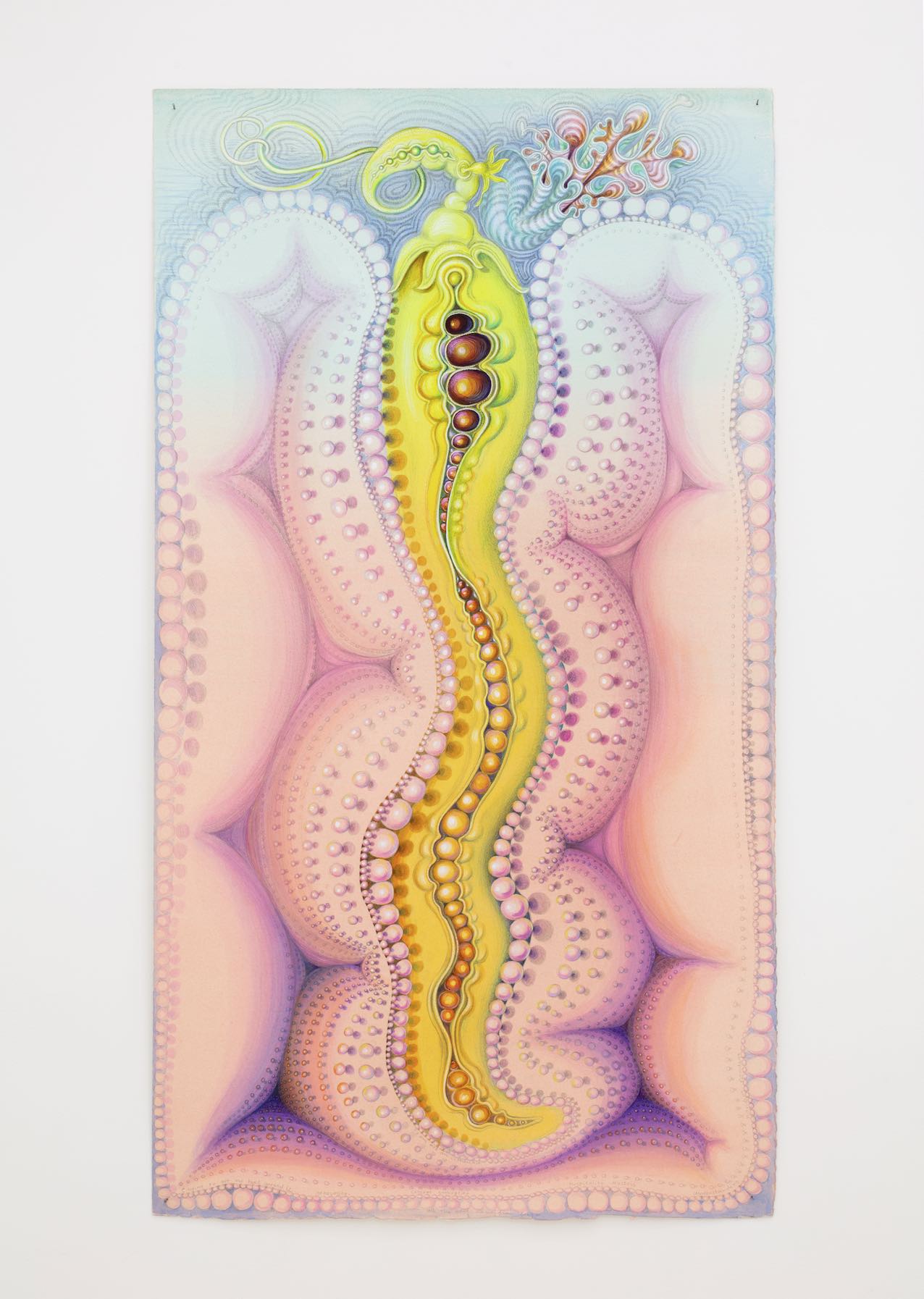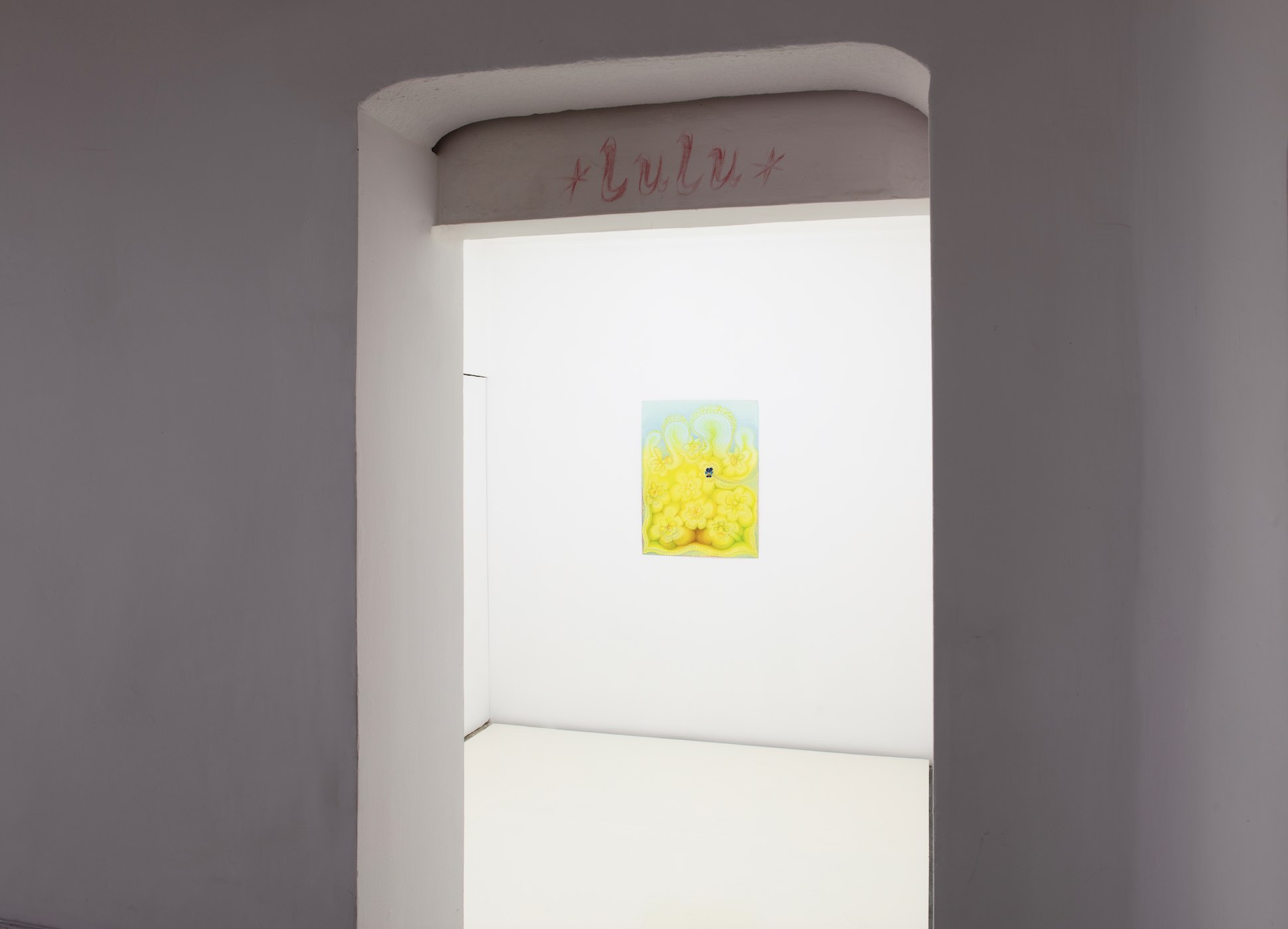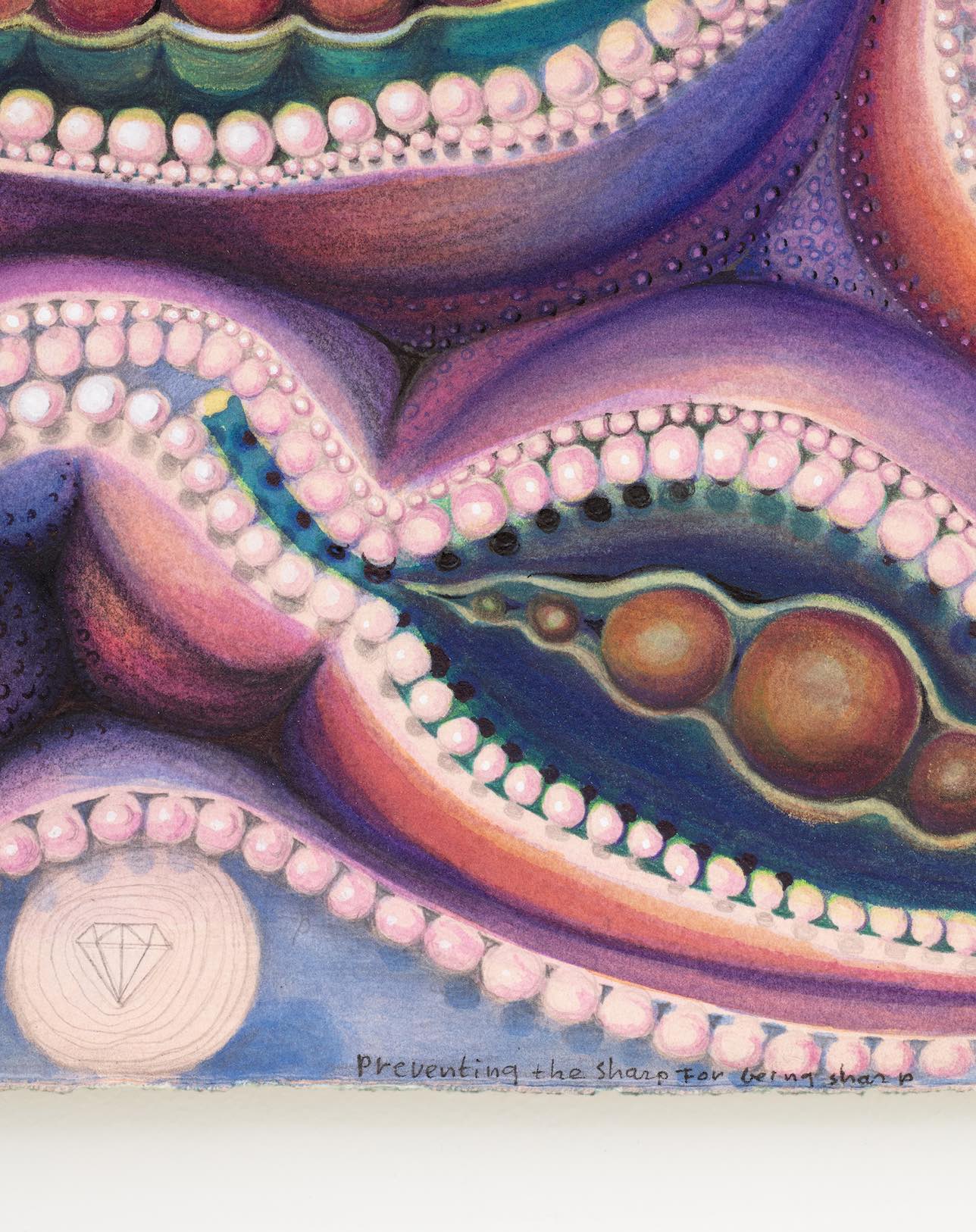
Review
Thus Sprout Pearls and Peas: On Within by Kinke Kooi
by Bruno Enciso
At Lulu by X Museum
Reading time
5 min
Within is the first solo exhibition in Mexico of the Dutch artist Kinke Kooi (1961). The show presents a selection of recent work, taking us into the artist’s arduous investigations into the feminine and into the complexities surrounding its representation. As usual at Lulu, what is favored is an intimate encounter with the works, one that immediately captures one’s attention and subjects it to a dynamic of seduction and curiosity.
Even though the most retinal approach to these works easily produces some kind of satisfaction, as more time is devoted to them a vast set of particularities unfolds. And that time involves an inquiry into the strange functioning of space in Kooi’s pictorial imaginary. Although an awareness of the frame is perceptible, it does not function as a sharp boundary. On the contrary, it is just barely the limit for insisting on the fertility of the available space. Let’s say, then, that the elements in view were not deposited to fill a void, but rather that they have emerged because here they found conditions for doing so. They are themselves the reminder of this ecosystem’s indeterminacy: perhaps from one of these small circles there will sprout a tiny vegetable arm. Maybe in the middle of the folds a sphere fell without making any sound. Nothing in this space can be fully measured or stretched out.

I would like to point out some of the particularities of Visit (2022) without wishing to decorate it further, especially against the different pieces, under hierarchical criteria. I rather begin in astonishment, seeking to comment on a couple issues that for me are unusual in their visuality. The first comes from color. Acid green and yellow lights make up a predominantly phosphorescent palette. This painting vibrates relentlessly and assertively. What I wish to highlight is a variation in which the light emanates from a more illuminated point (one that does not come from a single figure and is not in the center of the painting) outwards, where the less illuminated moment continues to participate in a certain stridency.
It is a scandalously detailed gradient that immediately suspends a sign that until now I had understood almost as a logical necessity: that phosphorescent colors are such insofar as they retain the maximum degree of saturation. Let’s add to this the exacerbated artificiality attributed to these colors—from their internal constitution to the figural frames in which they usually appear—always far from flowers and naturalisms. Then there begins to take place a visual and semantic shift, on whose basis I venture formulating a postulate: it is highly convenient to revisit the view that excludes and accuses artifices of obstructing the benefits of organic life. The severe natural-artificial binomial can stop sustaining itself in the contrast, and rather move towards the sensitive exercise of pondering the intensities of those bodies to which it attends.

The second observation, equally connected to the picture’s chromatic life, has to do with the flowers. An exotic navy blue flower perforates the radioactive membrane, disrupting it and inevitably intensifying it. This flower appears to be a pansy, although it could belong to a completely unknown species. Here, the occasion for contrast invests everything with high tension and brings with it tremendous power. The struggle for a focal point that fails to establish itself is pronounced: it could be the blue flower, it could be the lighting variation that I mentioned earlier, or it could be the phosphorescence itself. Each organ has a texture and each flower has a center. And despite the aggressiveness that overstimulation might cause, the petals’ delicacy prevails. Soft skins for caressing with one’s eyes closed.
It is worth mentioning the small annotations written in pencil, randomly distributed throughout the work, which use the multiple curves to generate rows of lines. They are single words and short sentences. It would seem that the resource of employing little text entails a sense of emphasis or urgency, but in this case it is scarcely noticeable, and the color threatens to absorb it completely. Coming across one or more of these micro-messages is a personal discovery, a pearl, a voice in the ear. The last that I found says: “all my kindness is taken for weakness.”

Of course, the riches of this body of work cannot be justified solely by the technical skill of its facture. Here I have sought to insinuate some reading guidelines that avail themselves of the queer orientation that I see in the work, but they have by no means been exhausted. From a kind of antechamber to the res publica, fused with a vegetable-corporeal imagery, Kooi’s work seems highly committed to identifying and challenging those visual paradigms that deny the vulnerability of bodies. In the same way, to state that these works seek to illustrate a discursive position would be, to say the least, hasty. It is rather a question of producing a series of forms, visualities, and atmospheres in which the gaze can, if not completely rethink itself, at least soften itself. Thus losing its stiffness as all bones have been lost in this soft and cavernous universe, adorned with flowers.
The exhibition can be visited until August 27 on Fridays and Saturdays from 11 AM to 6 PM or by appointment.
Translated to English by Byron Davies
Published on August 12 2022